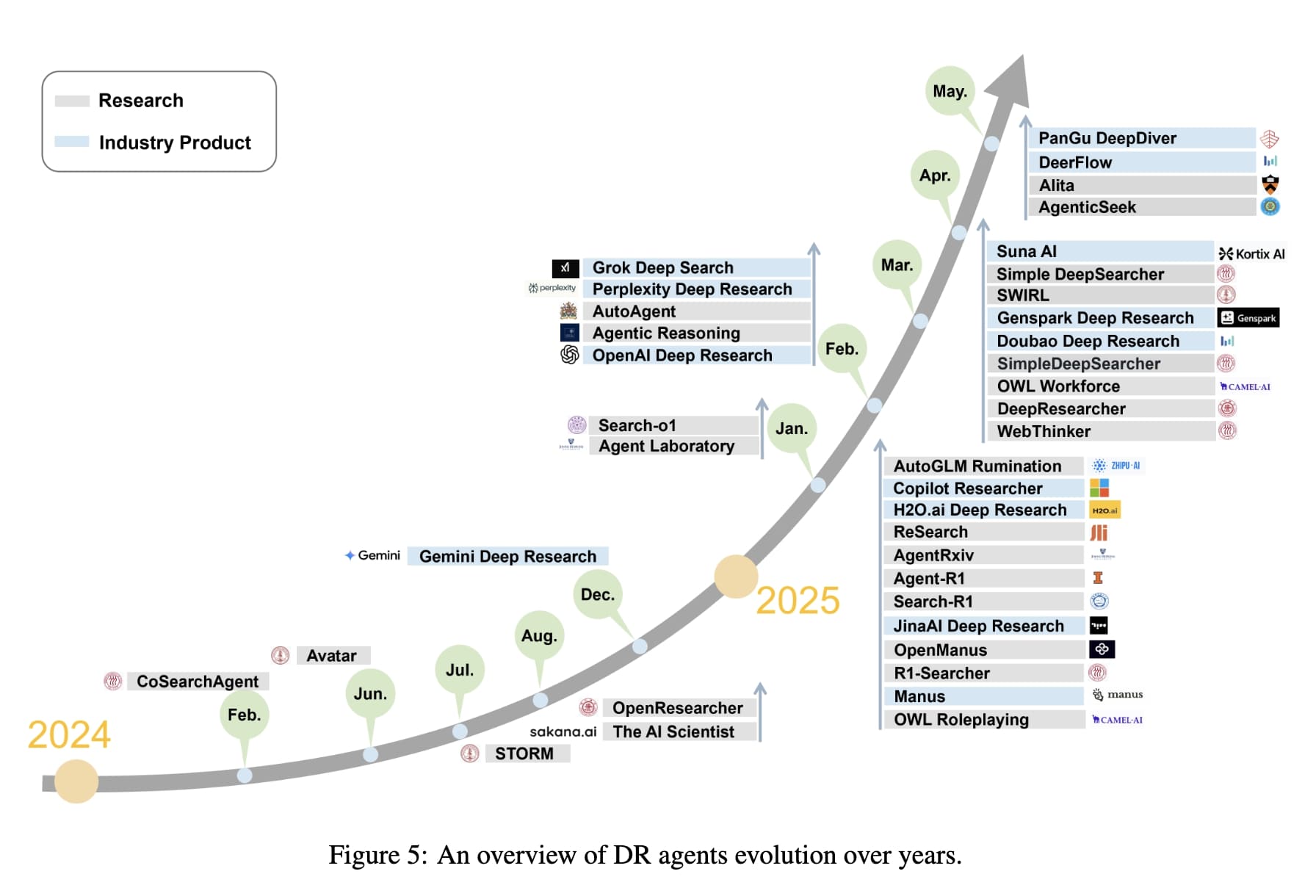Now Reading: Deep Research: Advancing AI Agents for the Future
-
01
Deep Research: Advancing AI Agents for the Future
Deep Research: Advancing AI Agents for the Future

Rapid Summary
- Deep Research (DR) AI agents are advanced systems capable of complex, multi-turn informational tasks using dynamic reasoning, adaptive planning, and complex tool utilization.
- Researchers propose a taxonomy categorizing agent workflows into static and dynamic structures while detailing modular tool-use frameworks like code execution, multimodal data integration, and Model Context Protocols (MCPs).
- Key technologies discussed include API-based retrieval methods for efficiency and browser-based exploration for versatility. Agents such as Gemini DR and Grok DeepSearch leverage APIs to access external knowledge at scale.
- Tool modules in DR systems include code interpreters for algorithm verification, data analytics for insight generation via visualization/statistics processing, and multimodal tools that handle text, images, audio-video inputs.
- Self-evolution paradigms using methods like Case-Based Reasoning (CBR) enable continuous learning by retrieving adaptable problem-solving trajectories dynamically from external databases.
- Promising future directions involve hierarchical case frameworks paired with autonomous workflow evolution to optimize efficiency in research tasks.
Images included:
- various screenshots explain technical workflows of DR agents.
- Displays case-based reasoning integration examples.
Indian Opinion Analysis
The emergence of Deep Research AI agents represents a crucial step forward in leveraging automation for solving complex problems across domains such as technology research or academic inquiry. Incorporating strategies like modular planning tools combined with adaptive self-learning mechanisms presents an prospect not just to refine operational efficiencies but also deepen analytical insights.For India’s tech ecosystem driven by sectors like AI innovation or IT services export leadership internationally investments toward adapting these probable useful backend deeper drawn toolkit surrounding both proactive boostsuling lessened searchingcleractical focusing stem-field

























